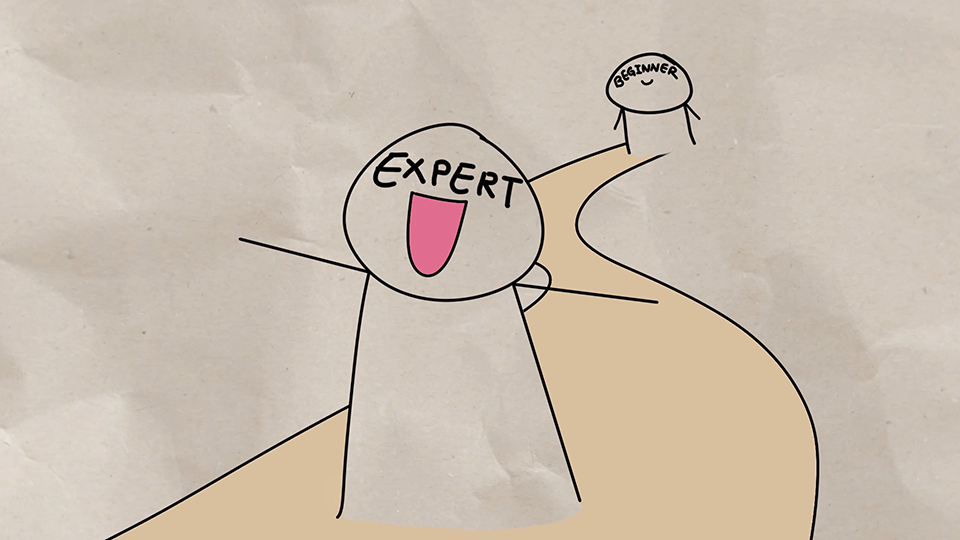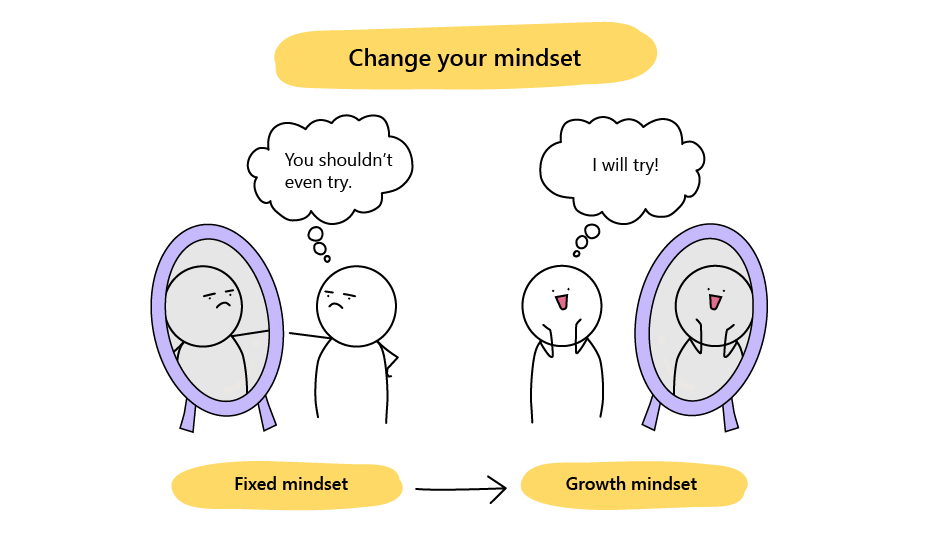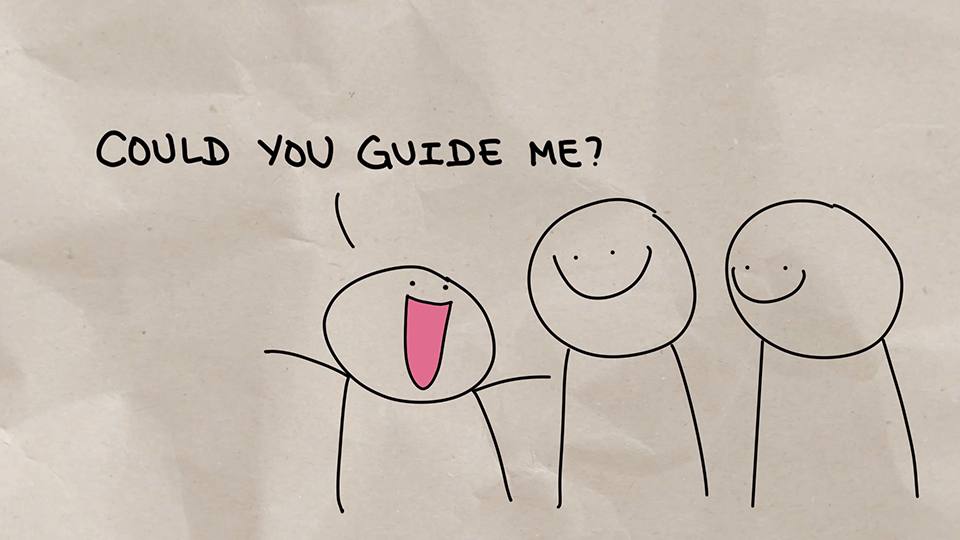Strategies to change your mindset to a growth mindset
Now that you've learned how to identify your mindsets, you realize you have a fixed mindset when you work on your coding project. The next step is for you to learn how to change your fixed mindset to a growth mindset.
Cultivate a growth mindset
When you suspect you have a fixed mindset, you can consciously interrupt the fixed-mindset pattern and cultivate a growth mindset by taking these steps:
Become aware of your internal dialogue. As your awareness of your internal dialogue improves, you can work on changing it to better support a growth mindset. Fixed mindset self-talk often begins with judgment and evaluation. Growth mindset self-talk starts with curiosity and a desire to learn.
Strive for progress, not perfection. Recognize growth by comparing results to where you were before.
Learn from others as you develop your skills. Remember that every expert was once a beginner.

Notice your inner dialogue
As you saw in the video, the first step in shifting your mindset to a growth mindset is to notice your inner dialogue. With awareness, you might notice self-doubts about doing things outside your comfort zone. You might notice internal dialogue like "People will laugh at me," or "I'll just fail again." Tell yourself "That’s okay, I can change it," and then adjust your inner dialogue.
For example, you can replace "I can’t do this task, I shouldn't even try" with "I might be able to do this task. What if I did try?"

If you tend to categorize yourself in limiting ways, challenge your assumptions. For example, suppose you're a coder and are asked to work with a graphic designer on the web user interface. You might think "I'm not a graphic designer, so I can't do that." This thought reflects that you have a fixed mindset. You believe you can't do the work because it's not an inherent part of your skillset.
You might then consider your skills and experience and think, "I understand how people use websites. Even though I'm not a graphic designer, I have something to offer." You might even decide that working with the graphic designer is a learning opportunity: "I might learn strategies from them to improve my skills."
Redirecting your thinking towards a growth mindset is giving yourself permission to try new things, learn, and grow.
Strive for progress, not perfection
Sometimes in the middle of a project it's difficult to get perspective on how well you're doing. It can feel like you'll never finish, especially if things aren't going well or if you have to restart or redo some tasks. Instead of waiting until the end of the project to celebrate, use small successes and accomplishments to excite and motivate you.
It's important to let yourself celebrate every success, no matter how small. Each little win means that you're getting closer to your goal. And whether it's during or after a project, you can celebrate your perseverance: when things were difficult, you kept going.

Measure your progress by comparing where you are today with where you were when you started. Celebrate your growth by celebrating small successes. Recognize that you're improving.
Learn from others as you develop your skills
When you're frustrated or stuck and you don’t know what to do next, don't be afraid to ask your peers or colleagues for help and guidance. There are also articles and information online that might help you develop a strategy to solve your problem.

Note
Remember that every expert was once a beginner and that no expert became an expert without help from other people.